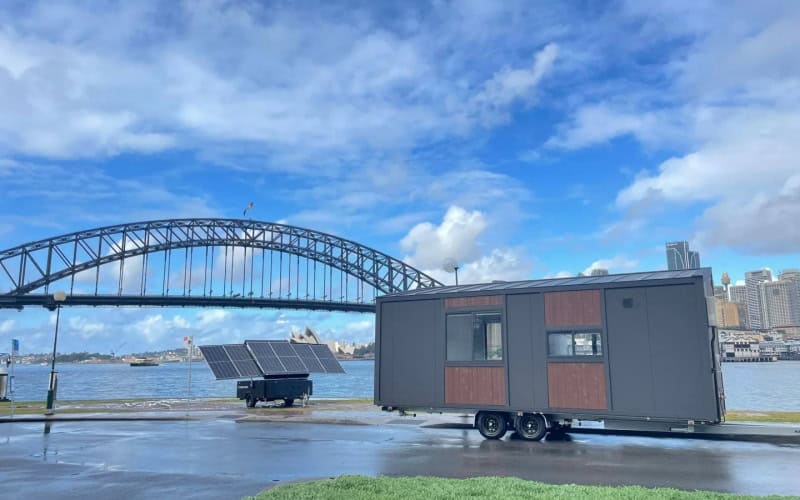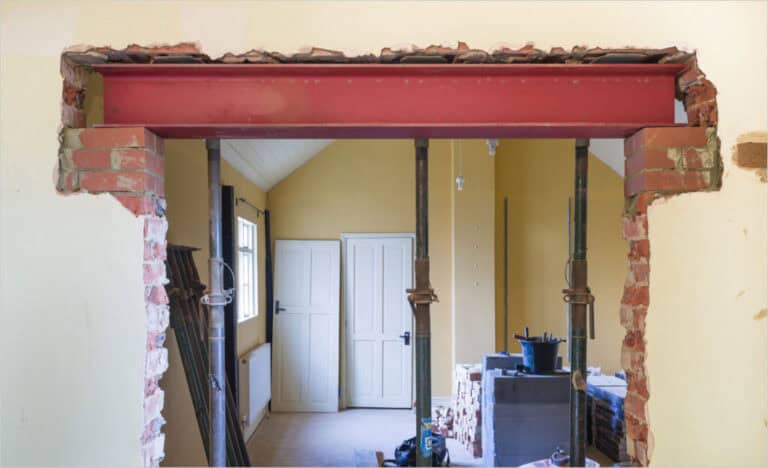Why are compact homes like shipping container conversions and tiny houses gaining popularity? From eco-conscious families to urban dwellers seeking financial freedom, the shift to smaller living reflects a growing demand for sustainability, affordability, and simplicity. But how do these two options compare?
As a steel structure manufacturer, we’ve seen container homes attract fans with their rugged durability, while tiny homes win hearts with their cozy, customizable charm. Is fast assembly or portability more important for you? Can a recycled steel box rival the warmth of a wooden cottage? This guide breaks down costs, build timelines, and eco-benefits to help you decide. Whether you’re after a minimalist fortress or a whimsical retreat, both options offer a fresh take on homeownership—freeing you from clutter and environmental guilt in an ever-changing world.
What Are Tiny Homes?
Also known as micro abodes, little dwellings, or mini residences, tiny homes usually span from 100 to 400 square feet. They are fully functional houses designed to fit everything you need—a kitchen, bathroom, sleeping area, and living space—into a much smaller footprint. Some are built on wheels (THOWs) so they can be moved easily, while others are placed on a foundation for permanent living. THOWs offer mobility but require more upkeep, while foundation-based models provide stability but must follow building codes. Common materials include wood framing, SIP panels for insulation, and reclaimed materials. Compared to container homes, they may have higher customization costs and require more maintenance.

Pros of Tiny Homes
Tiny dwellings aren’t merely about residing in a small space—they’re about residing with greater wisdom. They provide adaptability, ingenuity, and an opportunity to devise a dwelling that genuinely aligns with your way of life.
1. Smart Use of Space
Every inch of a tiny home is designed for function and efficiency. Whether built from scratch or prefabricated, these homes make the most of their space with:
- Multi-functional furniture like foldable beds and hidden storage.
- Elevated sleeping quarters to liberate living area.
- Expandable porches or rooftop decks for extra room to relax.
It’s all about customization—you decide how to make the space work for you.
2. A Cozy, Homey Feel
Unlike container homes, tiny homes often have a warm, traditional look with pitched roofs, wooden siding, and charming details. They blend easily into neighborhoods and feel more like a scaled-down version of a regular house rather than a compact steel structure.
3. Freedom to Move
A tiny home on wheels (THOW) gives you the freedom to travel, relocate, or live off-grid. It’s perfect for those who love new experiences or need a flexible housing option without being tied to one place.
4. Fewer Building Restrictions
In some areas, THOWs are classified as RVs, making it easier to park them without dealing with strict zoning laws. They’re ideal for private land, RV parks, and dedicated tiny home communities.
Cons of Tiny Homes
Tiny homes offer freedom, but they also come with trade-offs that aren’t for everyone.
1. Not Built for Extreme Weather
Most tiny homes use wood framing, which means they’re not as strong as steel-based structures. High winds, heavy snow, and storms can be a challenge, so proper reinforcement is a must.
2. Regular Maintenance Required
Wood-based homes need constant upkeep to avoid rot, termites, and weather damage, especially in humid or rainy climates. Without proper care, repair costs can add up.
3. Higher Cost Per Square Foot
Tiny homes cost less overall, but when you break it down per square foot, they can be more expensive than traditional homes. Custom designs, high-end finishes, and mobility features add up quickly.
4. Finding a Place to Live Can Be Tricky
Not all cities allow tiny homes, and zoning laws can be strict about minimum house sizes. Long-term parking for THOWs can also be an issue, often requiring RV parks or designated tiny home communities.
Tiny homes offer freedom, efficiency, and affordability, but their structural limitations, placement restrictions, and long-term maintenance should be carefully considered before making the investment.
What Are Container Homes?
Container homes are residential structures built from repurposed or new shipping containers, offering a durable, cost-effective, and modern housing solution. Originally designed for global cargo transport, the material used in most containers is Corten steel, known for its weather-resistant properties and structural strength.. Unlike traditional wood-framed homes, container homes are built from solid steel, which significantly enhances their durability and lifespan. Whether used as a single compact unit or combined into multi-container layouts, they provide a flexible and scalable approach to housing.

Pros of Container Homes
Container homes are gaining popularity for a reason—they’re strong, sustainable, and efficient. Built from high-strength steel, they offer a level of durability that traditional tiny homes can’t match.
1. Built to Last
In contrast to homes framed with wood, container homes are constructed from Corten steel that resists corrosion, engineered to endure severe weather conditions, substantial weights, and even seismic events. They won’t rot, warp, or attract pests, making them a low-maintenance option—ideal for coastal areas, hurricane zones, and off-grid locations where durability is key.
2. Faster and More Cost-Effective Construction
Since the fundamental framework is already established, container homes can be constructed considerably more swiftly than conventional dwellings. A single-container home can be move-in ready in weeks, while multi-container designs take just a few months. Prefabrication further speeds up the process, cutting down on labor costs and construction time.
3. Sustainable and Eco-Friendly
Employing reused shipping containers aids in minimizing construction debris, rendering these dwellings an excellent option for eco-aware purchasers. Unlike traditional housing, which requires large amounts of wood, concrete, and brick, container homes use fewer natural resources. Plus, they pair well with solar panels, rainwater collection, and other sustainable systems, making them even greener.
4. Ideal for Off-Grid Living
Container homes are perfect for off-grid setups, thanks to their durability and adaptability. Their solid steel frame allows for easy integration with solar power, water filtration, and wind energy systems. For those looking for a self-sufficient, low-maintenance home, containers are a solid choice.
5. Long-Lasting with Minimal Maintenance
Steel is built to last. With proper rust prevention and insulation, container homes can stand strong for decades. Unlike wood, which requires constant upkeep against pests and weather damage, steel homes age well with little maintenance, making them a smart long-term investment.
Cons of Container Homes
While container homes offer a lot of advantages, they also come with some trade-offs that homeowners should consider.
1. Insulation and Climate Control Challenges
Steel conducts heat and cold much more than wood, which means poor insulation can make a container home uncomfortable. In the absence of adequate insulation and ventilation, they might become excessively hot during summer and swiftly lose warmth in winter. If you’re wondering how to insulate a shipping container home effectively, spray foam is often the best option for creating an airtight thermal barrier, especially in extreme climates. Solutions like spray foam insulation, ventilated roofing, and reflective coatings help, but they add to the overall cost.
2. Zoning and Permit Challenges
Not all locations allow container homes. Some cities have strict zoning laws or minimum size requirements that can make approval difficult. Prior to initiating a project, it is crucial to verify local construction regulations and obtain necessary permits to prevent unforeseen obstacles.
3. Customization Costs Can Add Up
While container homes are modular, modifying them isn’t as simple as cutting wood. Creating large windows, open spaces, or custom layouts requires cutting, welding, and reinforcing steel, which adds to labor and material costs. Complex designs can end up being more expensive than expected.
4. Heavy Weight and Transportation Costs
A forty-foot shipping container possesses a weight exceeding 8,000 pounds, rendering it more substantial than conventional tiny dwellings. Moving and placing them requires cranes or heavy-duty equipment, adding to setup costs. Unlike a tiny home on wheels, relocating a container home isn’t as simple.
However, choosing a pre-modified container home with built-in mobility features, such as a trailer base or detachable foundation, can make transportation easier and more cost-effective.
Container homes offer durability, sustainability, and modern design, but factors like climate adaptation, zoning laws, and modification costs should be carefully considered before making the investment.
Container Home vs Tiny Home: Key Comparisons
Deciding between a container home and a tiny home hinges on factors such as budget, longevity, environmental impact, and personal lifestyle requirements. While both offer compact and efficient living, they differ in cost, maintenance, and adaptability. Here’s how they compare.
Which Is More Affordable?
Tiny homes offer budget flexibility, as they can be custom-built or prefabricated. However, high-end tiny homes with luxury finishes and off-grid features can be surprisingly expensive.
Container homes start at a lower base cost, though modifications like insulation and structural changes add expenses. However, they often require less maintenance, balancing out costs over time.
✅ Winner: Container Homes – Lower base cost and long-term savings.
Which Is More Durable?
Dwellings classified as tiny homes, frequently constructed with wooden framing, are susceptible to decay, infestations by pests, and weather-induced deterioration. Routine upkeep is essential to preclude structural complications.
Container homes, crafted from robust steel, exhibit resistance to moisture, pests, and severe weather conditions. They hold up better in hurricane zones, earthquake-prone areas, and harsh climates, making them a low-maintenance, long-term option.
✅ Winner: Container Homes – Stronger structure, better weather resistance.
Which Is Better for Off-Grid Living?
Tiny homes can integrate solar panels, rainwater collection, and composting toilets, but their lighter materials may not insulate well in extreme conditions.
Container homes are better suited for off-grid setups thanks to steel durability, easier solar panel installation, and water collection compatibility. Their solid structure also provides better security, ideal for remote locations.
✅ Winner: Container Homes – More durable and adaptable for off-grid use.
Which Offers More Customization?
Tiny homes afford greater creative latitude, as they can be conceived from the ground up or altered with relative ease. Their traditional layouts make customization simple.
Container homes are modular, stackable, and scalable, allowing for multi-unit layouts and expansion. However, modifying steel requires specialized tools and labor, which can increase costs.
✅ Winner: Tiny Homes – Easier customization without structural challenges.
Which Is More Sustainable?
Tiny homes use fewer resources, but unless they incorporate reclaimed materials, their environmental impact is minimal.
Container homes repurpose industrial-grade steel, thereby minimizing waste and granting shipping containers a renewed purpose. Additionally, they necessitate a lesser amount of raw materials compared to conventional building methods.
✅ Winner: Container Homes – More eco-friendly due to material reuse.
Which Home Fits You Best?
Both tiny homes and container homes have their perks—it all comes down to your lifestyle, budget, and long-term plans. If you want something cozy and mobile, a tiny home might be the way to go. If you’re after durability, low maintenance, and a more modern approach, a shipping container tiny house could be the smarter choice.
At the end of the day, it’s about finding a home that works for you. That’s where we come in. We design custom shipping container tiny houses that are strong, efficient, and built to last—perfect for off-grid living, backyard rentals, or even a sleek, modern getaway.
Want to see what’s possible? Check out our Shipping Container Tiny House and explore designs that fit your vision.

